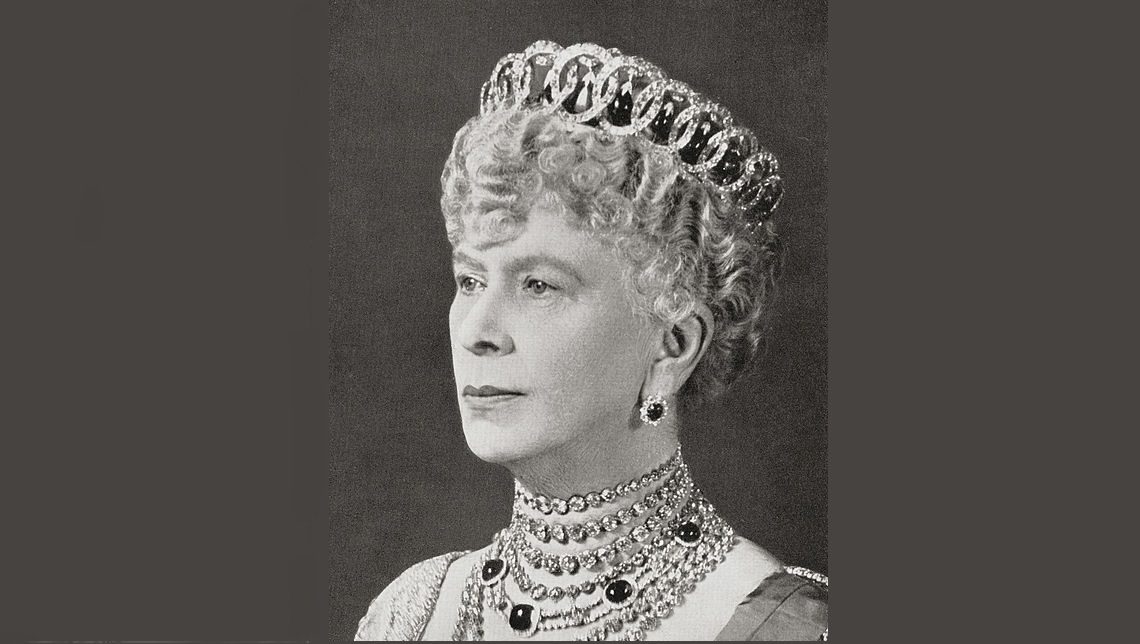
The British royal family has many notable pieces of jewellery in their collection. From personal purchases to items passed down through generations, Royal Central is taking a look at the origins of the Cambridge emeralds.
Nearly 200 years ago, in Germany, after the unexpected death of Princess Charlotte of Wales, the sons of King George III had to scramble to marry and produce a legitimate heir to the throne.
In 1818, the king’s seventh son, Prince Adolphus, Duke of Cambridge married a young German princess, Augusta of Hesse-Kassel, who would then become the Duchess of Cambridge. The two would reside in Hanover before moving to the United Kingdom years later.
While visiting her native Hesse, a region and former grand duchy of west-central Germany, Augusta bought raffle tickets for a state-sponsored charity lottery. Augusta won and received about 40 cabochon emeralds. The stones of various sizes would then become known as the Cambridge emeralds.
After the Duke and Duchess’s niece, Victoria became Queen in 1837, the Cambridge’s moved to England. This would mark the first time in which the emeralds would be incorporated into various pieces of jewellery. Augusta had an English jeweler create a five pendant necklace and a pair of drop earrings from the emeralds.
[getty src=”463974505″ width=”343″ height=”594″ tld=”com”]Adolphus and Augusta had three children. When their daughter, Mary Adelaide married the Duke of Teck, a member of the royal family of Württemberg, Mary became the Duchess of Teck. After her mother’s passing in 1889, the Duchess inherited her mother’s custom-made jewellery and the remainder of the loose emeralds.
The Duchess would keep the jewellery intact. She later used two of the loose stones to embellish one of her diamond stomachers. Garrad, a famous London based jeweler had only previously made the stomachers for the Duchess using diamonds.
In 1893, Mary Adelaide’s daughter, also named Mary, would marry the future king of the United Kingdom, the Duke of York. Mary, now the Duchess of York, would not inherit the Cambridge emeralds when her mother unexpectedly died in 1897.
[getty src=”3260438″ width=”435″ height=”594″ tld=”com”]Instead, the emeralds went to Prince Francis, the third child of the Duke and Duchess of Teck. During his life, Francis, or Frank was a bachelor. However, he did have a mistress: Nellie, the Countess of Kilmorey. Because he was not married, the emeralds nearly left royal possession when Frank suddenly died in 1910. This was because he had decided to leave the stones to Nellie.
Frank’s sister, who would later become Queen Mary was not particularly happy about her brother’s choice to lend their mother’s jewels. Lawyers were then brought into the situation. Frank’s will was made private, and Nellie would give the emeralds back.
In 1911, for her coronation in India, she commissioned Garrad to create a new set of jewels. The set would include a tiara, a necklace, a stomacher, and a pair of earrings.
[getty src=”78949974″ width=”395″ height=”594″ tld=”com”]An emerald brooch that Mary received at the durbar is often displayed with the jewellery set. However, it was not commissioned by Garrad. A choker necklace (later made famous by Diana, Princess of Wales), and a bracelet were also given to Mary at the event. A few years later, the emeralds from the tiara would be used to make a smaller diamond bandeau.
[getty src=”52118414″ width=”411″ height=”594″ tld=”com”]In 1981, Diana would be gifted the Queen Mary’s Art Deco Emerald Choker as a wedding gift from the Queen. The Queen had inherited the piece from her grandmother in 1953. During a visit to Melbourne in October of 1985, Diana would famously wear the choker as a bandeau. She was often seen wearing the piece as a choker as well.
[getty src=”52101854″ width=”358″ height=”594″ tld=”com”]In 1946, Queen Mary gave the Durbar tiara to her daughter-in-law, Queen Elizabeth, as a permanent loan. The tiara was in her possession until her death in 2002. It was then inherited by the current Queen, and her daughter, Queen Elizabeth II. Her Majesty has never worn this particular tiara in public. The tiara was then lent to the Queen’s daughter-in-law, the Duchess of Cornwall, in 2005.
[getty src=”56013125″ width=”372″ height=”594″ tld=”com”]In 1924, Mary would purchase the Vladimir Tiara from the daughter of Grand Duchess Maria Pavlovna of Russia. The tiara was then adapted to be worn with the Cambridge emeralds.
[getty src=”71513143″ width=”594″ height=”356″ tld=”com”]The Vladimir Tiara is perceived to be one of the Queen’s favourites. With the ability to interchange the emeralds, the Queen is often seen wearing pearls in place of the stones.
To learn more about Britain’s best emeralds, you can click here.

